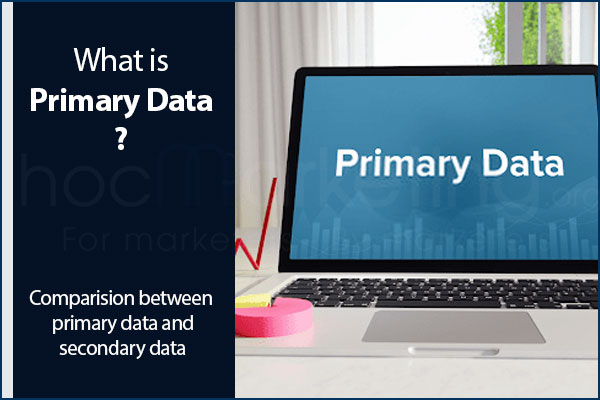
Understanding Data Collection: Types, Importance, Methods, and Steps

Data collection is the process of gathering and organizing information in a systematic manner It plays a crucial role in acquiring knowledge and insights into various fields of research Effective data collection methods and steps are essential to ensure accurate and reliable results that can be used for various purposes
Obtaining studies in a correct and organized manner is known as data collection, a fundamental step in gaining the necessary knowledge for research. This process is applicable across multiple industries including but not limited to business, government, and academics. It is essential for progressing in any field, whether it be in science, humanities, or business planning. The credibility and adequacy of collected data play a vital role in determining the longevity of the research.
Collecting data can be an arduous and time-consuming task, requiring a significant investment of both time and effort. It is a critical part of any research project or organizational initiative, and should not be taken lightly. Despite variations in goals or objectives, the process of data collection remains consistent and requires careful attention to detail. In this article, we will explore the definition and key concepts of data collection, providing a comprehensive overview of this important topic. Let's dive in!
What is Data Collection?
Collecting data is a crucial step in conducting effective research. This process involves gathering, measuring, and analyzing accurate information using appropriate techniques to evaluate hypotheses. It is important to note that precise data collection is essential for obtaining reliable research outcomes.
It is essential to have a clear understanding of the purpose and objective of your research. Developing a well-planned strategy, even if it is only a draft, can facilitate the identification of the necessary steps required to attain specific outcomes.
Furthermore, it is crucial to determine the type of data that will be collected. Depending on the method utilized, one may need to select the appropriate data. The use of relevant data can significantly expedite the entire research process.
Why is Data Collection important?
Collecting data, organizing it, and managing it require adherence to ethical and principled protocols. Ensuring the accuracy and integrity of the data is paramount in this process. Effective data management involves the implementation of comprehensive systems and procedures to ensure that the data is stored and processed efficiently.
Data collection serves as a crucial aspect for analysts and researchers due to its numerous fundamental purposes. The importance of data collection can be attributed to various factors, including:
Ensuring Research Integrity - One crucial aspect of using quantitative or qualitative techniques for data collection is to maintain the honesty of the research question.
Reducing Errors and Mistakes - Proper utilization of appropriate data collection methods can significantly decrease the likelihood of errors occurring during various stages of the research process.
It is crucial to gather precise data for effective and accurate decision making, in order to minimize the risk of mistakes or errors. This not only ensures that specialists make informed decisions, but also saves time and money that would otherwise be wasted without a deeper understanding of the subject matter.
Empowers a new idea or change – To demonstrate the requirement for an adjustment or new change, it is critical to collect data and information as proof to help these cases.
Data Collection Methods
The most common methods of data collection are-
1. In-Person Interviews
are a popular method for collecting data, especially when targeting a specific audience. This method allows for a higher response rate compared to other survey methods, but it can also be costly and may suffer from low response rates. Additionally, there is a risk of response bias if only a certain type of person responds to the survey.
For data collection, this method can reach anyone and everyone without facing any impediments, but it can also be expensive and comprise lag time and data-collection errors.
3. Phone Surveys
Web/Online surveys are a popular data collection method that enables researchers to reach a vast audience at a low cost. This method allows for easy distribution and completion of surveys, making it a convenient option for both researchers and participants. Additionally, the collected data can be analyzed quickly and efficiently, providing valuable insights for the research topic at hand. However, it is important to note that online surveys may not be representative of the entire population, as not everyone has access to the internet.
This approach is both cost-effective and can be easily executed by the individual. Additionally, the likelihood of encountering data inaccuracies is minimal. However, it is important to note that not all clientele may possess an email address or have a digital presence.
4 Steps involved in effective Data Collection
Obtaining accurate and relevant data is essential for any business or organization. To ensure the highest quality of data, it is important to follow four key steps:
1. Clearly define the objectives and purpose of the data collection process.
2. Determine the appropriate data sources and methods of collection.
3. Develop a plan for organizing and analyzing the data.
4. Regularly review and refine the data collection process to ensure its effectiveness.
By following these steps, businesses and organizations can gather the best possible data to support their decision-making processes.
1. First step: Know the Aim
The first and pioneer step is knowing the aim of the research field. What you want to have in your hands at the end of the project will help you start.
Craft a questionnaire that aligns with the objectives of your research and the information you wish to gather. Ensure that it is tailored to either qualitative or quantitative research methods based on your specific research questions. Be thorough in your assessment. Quantitative research involves numerical data, statistics, and graphs, while qualitative research includes statements and categorizations, such as interviews.
Quantitative data includes analyzing and confirming hypotheses as well as calculating and interpreting statistical insights. This type of data is typically expressed numerically and requires statistical analysis to identify trends in data.
Qualitative data encompasses the exploration of concepts by exemplifying a situation, comprehending it, and gathering details from a specific context. Such data are often intangible and necessitate the expertise of psychologists or consumer behaviorists to fully grasp all aspects of the collected data.
And where elements of both are much, mixed methods must be the approach.
2. Second step: Deciding how to collect the data
Selecting the appropriate data collection method for your data rule is crucial. It is important to determine the most suitable method that will aid in gathering data on a specific subject. Keeping up with media consumption trends can help in identifying the right form of media to use.
Experimental research is considered the most effective data collection method for quantitative research. On the other hand, ethnography is commonly used for qualitative interviews. However, there are methods that can be utilized for both qualitative and quantitative research.
Surveys, observation, secondary data assortment, etc
Below are other data collection methods to use. Choose your best matching method according to the data:
The choice of parameters in scientific or psychological experiments can yield valuable data, even if the experiments themselves may differ. By evaluating causal factors in relationships, researchers can effectively study social factors while considering variables and changes over time.
Manipulating variables to observe their impact on others can provide valuable insights in various scenarios. Another effective method of collecting data is through surveys and questionnaires, which are particularly useful when considering demographics. By conducting surveys on a large sample size while ensuring each individual within a category is distinct, valuable information can be obtained.
Understanding the viewpoints of a group is key in comprehending consumer behavior. Market research often employs this tactic to evaluate habits and tendencies. One effective approach is conducting interviews, either in person, over the phone, or through mail. These conversations provide valuable insights into the consumer's thought processes. Additionally, group discussions can offer a broader perspective on the consumer's outlook.
Understanding the community dynamics of a specific ethnic group is crucial for obtaining insightful data. This observational science provides essential information for regional demographic descriptions. It is imperative to not only collect samples but also to analyze them to gain valuable insights that can be utilized in the future.
Gaining insight into the culture of a society, organization, or other entity is crucial for developing effective marketing strategies or government PR initiatives. Conducting archival research is a valuable method of understanding the historical context and cultural nuances, and can be accomplished through a variety of sources such as government repositories, public libraries, and newspaper archives.
Researching events and history requires collecting both brief and in-depth information, including historical data. Those seeking a comprehensive understanding may delve into archaeological data. Sources for research include manuscripts, records in libraries and depots, and the vast resources available online. However, it's important to exercise caution and verify the credibility of online sources.
Utilizing secondary data gathering is a cost-effective approach for collecting data without the financial resources to conduct extensive data extraction methods. This method entails accessing previously gathered data from primary research, a well-established practice. One can leverage the data collected by research organizations or government institutions to supplement their findings. If one lacks the analytical ability to comprehend the collected data, outsourcing analytical work to experts is a viable option.
3. Third step: Planning how the data collection process will do
You must know the procedures you are going to capture—keeping in mind that the observations are accurate, as much as possible.
Ensure that the design and planning of experimental structures are carefully considered before commencing any experiments. Additionally, thorough preparation of questions is essential when creating questionnaires for surveys.
It is important to learn how to effectively organize and store data while also being responsible for any sensitive information. This is especially crucial when dealing with data collected from multiple individuals, as extra precautions must be taken to ensure the confidentiality and security of the information.
Reports often highlight the causes of data loss as being a result of inadequate backup procedures or poorly organized systems. During interviews, data is transcribed immediately, with efforts made to avoid any negative reactions.
Variables can be measured directly in the operationalization process of data collection. For instance, determining and gathering the average age of a group is a direct measurement, while verbal extraction is considered indirect. In essence, any abstract concept can be transformed into a quantifiable entity through this process.
Sampling is a popular method for capturing data. To effectively implement this method, a sampling plan is necessary. This plan will enable you to obtain a representative instance of your work and the enrollment process. Several factors can impact the success of this method, including the sample size, accessibility of the sample, and the duration of the data collection process.
Researchers often employ the standardizing procedure as a reliable method for ensuring consistency in data collection. This involves multiple researchers collaborating to create a protocol for collecting data, with each step clearly outlined and standardized. The result is a consistent and replicable approach that can be easily followed by others.
It is important to note that different data samples may require different analysis methods, and it is crucial to approach each task with care and attention to detail. This is also an opportune time for thorough editing and proofreading while keeping the ultimate goal in mind. By following a well-structured course of action, researchers can ensure the accuracy and validity of their data analysis.
4. Fourth step: Data collection
After learning all the steps, use it according to your goal and area.
The importance of data cannot be overstated in any industry. The amount of data you have and its accuracy are critical factors that determine the success of your endeavors.
Primary data collection involves gathering data yourself rather than relying on external agencies. This ensures that the data you collect is unique and has not been used by anyone else. You are the first to obtain this information.
Secondary data is the opposite of it. You don’t extort it but have taken some shapes of it for your research purpose.
Uses of Data Collection
Accurate data collection is a valuable asset, especially when the collected data is of high quality. This data can be utilized in various ways, such as for statistical analysis or strategic planning.
With improved audience engagement, businesses can gain a deeper understanding of their target market and tailor their strategies accordingly. Additionally, in academia, analyzing data more effectively can lead to breakthrough discoveries and valuable insights. Ultimately, better evaluation of data can lead to greater success in both fields.
Understanding the insights gathered from the data you've collected can provide valuable information on your audience's perception of your brand or product. This knowledge can aid in crafting a more effective campaign strategy or communication approach that addresses their specific needs and preferences.
Analyzing the media consumption habits of the target audience is crucial for brands to effectively place their advertising or communication amidst the clutter. With accurate survey results, brands can also identify opportunities to strengthen their relationship with their audience and keep them engaged.
As more people have taken to using social media, having a part to play in peoples’ lives through their social media can help the brand sustain ties.
2. Capturing how and which way to improve
Analyzing data provides insights into the performance of an organization or company, highlighting areas for improvement and determining the extent to which goals can be achieved. After collecting sufficient data, it is imperative to draw conclusions from the analysis.
With this analysis, businesses can find ways to understand where they are lacking and where the consumers’ expectations are.
3. Obtaining Future insights
By analyzing data, you can also gain valuable insights into future holdings and guide them towards optimal performance. Additionally, understanding market trends and consumer behavior can aid in the development of effective future strategies.
Clear insights are crucial for agencies to stay in tune with their consumers and respond promptly to any issues that may arise. With this approach, swift action can be taken and necessary changes can be implemented to ensure seamless operations. In conclusion, data collection plays a vital role in the success of any agency, and it should be a top priority for all businesses to collect and analyze data effectively.
Accurate and relevant data collection is crucial in research, as it enables researchers to draw meaningful conclusions through proper analysis. Moreover, data collection can be employed to identify areas for improvement or to bridge gaps. Various sources such as the internet, government repositories, and archives can be utilized for data collection, but it is essential to collect only relevant data to avoid wasting time and effort.
One can choose the right media and source that they want to collect particular data.










